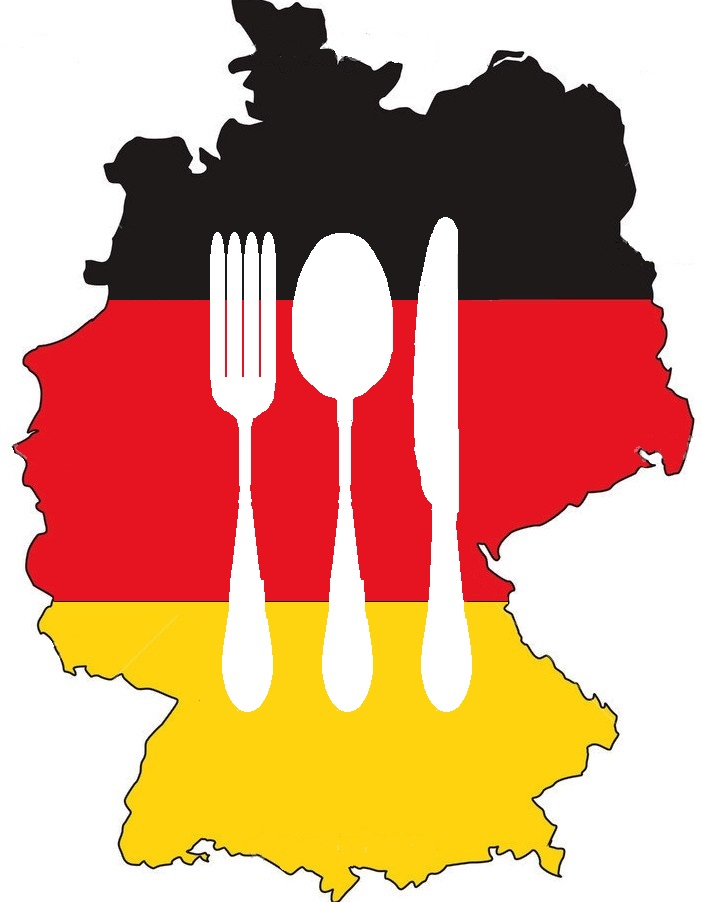|
German cuisine varies from region to region. The southern regions of Baden-Wittenberg and Bavaria share a culinary culture with Switzerland and Austria. Pork, beef, and poultry are the main varieties of meat consumed; fish, fruit, grains, and vegetables are also part of their mainstay.
A popular German saying: "Breakfast like an emperor, lunch like a king, and dine like a beggar." The noon meal is the foundation of the daily meals.
Breakfast is usually a selection of breads and rolls with jam and honey or cold cuts and cheese, sometimes accompanied by a boiled egg. The Bauernfrühstück or Farmer's Breakfast is a traditional and hearty breakfast such as the Bavarian "Brotzeit" with Weiß wurst, Sweet Mustard and Wheat beer, or Hefeweißbier are a must try. Cereals or muesli with milk or yoghurt is also becoming very popular.
Noodles, made from wheat flour and egg, are usually thicker; especially in the southwestern part of the country, the predominant variety of noodles are Spätzle and Maultaschen, traditional stuffed noodles reminiscent of ravioli.
Potatoes are also common. They most often are boiled (in salt water, Salzkartoffeln), but mashed (Kartoffelpüree) and pan-roasted potatoes (Bratkartoffeln) also are traditional. French fries, called Pommes frites, are traditionally offered with either ketchup or mayonnaise, or, as Pommes rot/weiß (fries red/white), with both.
Also common are dumplings (including Klöße as the term in the north or Knödel as the term in the south) and in southern Germany potato noodles, including Schupfnudeln, which are similar to Italian gnocchi.
Salads and vegetarian dishes are also popular in Germany. Bread (Brot) is a significant part of German cuisine. About 600 main types of breads and 1,200 different types of pastries and rolls are produced in about 17,000 bakeries.
|



